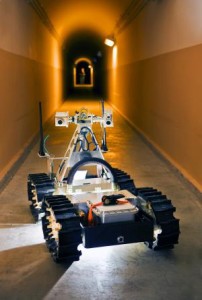The December DARPA trials saw possibly the biggest congregation of state-of-the-art humanoid robots ever. The DARPA Robotics Challenge was launched in 2012, after the Fukushima nuclear meltdown vividly demonstrated how unpractical our most advanced humanoid robots were for disaster response. Since then, things have improved considerably: robots have learned to climb ladders, open doors, turn valves and even drive vehicles. But are they ready to survive a full-scale rescue mission?
Everyone who watched the trials knows that the answer is a resounding “no.” Even the most devoted robotics aficionados might have felt slightly uncomfortable watching some of the best robots struggle for minutes to perform such a mundane task as opening a door. The winning S-one robot, created by the Google-owned Japanese robotics company Schaft, although doing extremely well overall, still failed to climb out of a vehicle after driving it – something that would have easily sabotaged a real rescue mission. In short, the trials have shown not only how much we have done, but also how much there is still to be done.
The expo, hosted during the trials, was a different story. While humanoid robots were giving an insight into the future of disaster-response robotics, other robots were showing more mature down-to-earth applications. The expo area featured, for instance, a modular snake robot showcased by the Biorobotics Lab at Carnegie Mellon University, which moves around by wiggling its body, just like a real snake. The robot can be used in emergency situations for gaining visual information, say, in a collapsed building. One of the advantages of this biomimetic body structure is that snake robots can climb pipes and other structures that are virtually inaccessible to any other robot. You can see some of the amazing things this robot can do HERE.
Another example of a real-world success in disaster-response robotics that appeared in the expo is the Johns Hopkins Applied Physics Laboratory’s Robo Sally. This semi-humanoid wheeled robot along with another similar robot manufactured by HDT Robotics could be seen in an attempt to stabilize a dummy victim and use a stretcher to evacuate it. Operated by a human wearing sensor gloves and a virtual reality headset, Robo Sally’s sensitive hands also allow her to perform extremely dangerous tasks, such as defusing a bomb, with no risk for the operator. You can see Robo Sally in action and read more HERE.




